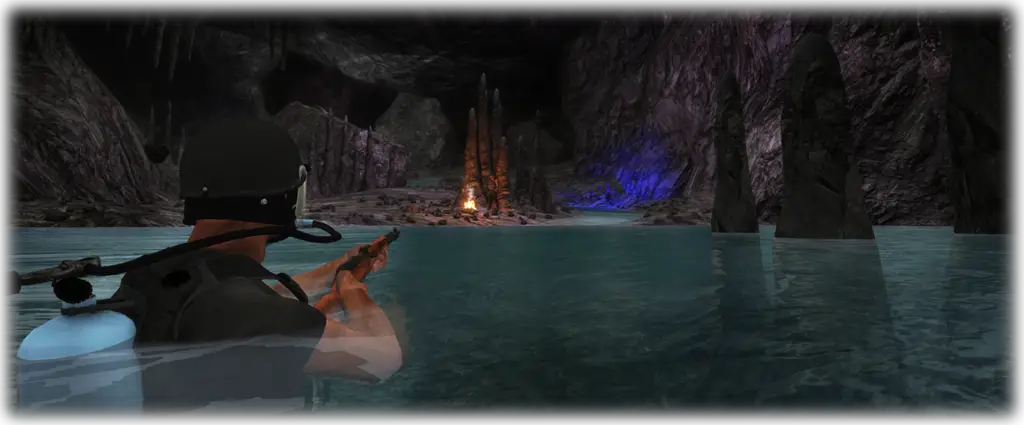
Theory is a fairly scary word for a lot of people. It sounds very academic, maybe even a bit abstract. However, we use theory all the time in game design. We use it when we make decisions that will impact gameplay. We probably used it before we ever created one art asset or wrote one line of code. When we started with an idea, we thought through the idea with some type of theory.
Game design theory is a belief or idea intended to explain a set of game results. For example, we use game design theory to explain why a game is fun or why pathing in level layout is important.
This is a broad definition. For this reason, when people speak about game design theories, they can be cover a wide range of areas. As we discover a few game design theories, you will realize that we focus heavily on theories related to other forms of design as well. We will dive into how these theories might be applied in a game world.
Game Design Theory of Balance
In graphic design, the theory of balance would explain how elements on a screen, page, or brochure are laid out. Balance would allow every aspect of a page to keep a level of interest. Your eyes will naturally gravitate towards certain elements, but this is intentionally designed by the designer.
You may use balance to create a certain area of interest in graphic design. You will also use it to keep a viewer’s interest.
The same is true in game design. Suppose I was to tell you that we were going to create an escape style room game. One of the clues for a puzzle would be on a shelf on one side of the room, the only item on the shelf. We would not have anything else on the opposite wall or any of the other shelves. How would you feel about this?
The puzzle would likely be too easy to solve. If I want to increase difficulty in finding the clue, I need to create more balance to draw the player’s attention away.
Perhaps I could create a whole different shelf, place a few items that appear of similar value to the player. The balance creates unity in the scene, but also will increase the difficulty of the puzzle.
Now let’s suppose we go in the opposite direction. We have a clue taped to the bottom of one item on the shelf, but we have one thousand items across several shelves that look of similar value. People would quickly become frustrated with this type of gameplay. A healthy balance is necessary here.
Balance can be used to either draw attention or remove attention to certain parts of a game world.
Game Design Theory of Repetition
Repetition is used in almost all forms of design. For web design, you will often see better designs use similar button styles, colors, types, etc. This is not just because people like it, but often our brain will start to recognize those colors in certain ways.
As an example, if you are a web designer and have a color you use sparingly, perhaps for important things you want the users to see, you would apply it only to a few elements. As people navigate the website, they will quickly begin to associate that color with importance or actions the developers are asking them to take.
In game design, repetition is extremely valuable. Suppose you build a first-person shooter, but each gun you pick up uses a different button to fire the weapon. One uses the left mouse button, another the space bar, and the last one the “f” key. Why do we not do this? The reason is because of the theory of repetition.
Players should become familiar with a set of controls for a game as they play it. As players learn, they generally expect similar behavior as they progress through the game.
Repetition is also used within the game world. Similar to the color idea in web design, we may use specific colors, light, textures, or other graphically designed elements to draw attention.
In terms of keeping a very cohesive world, most games will use similar texturing styles throughout. This level of repetition is what keeps a certain art style in games and allows multiple designers to work with one another.
Game Design Theory of Contrast
Contrast is used heavily to draw attention to specific elements. In web design, it is not just color. Instead, you will find contrast in typography (note the headings from the standard text on this post). You might also find it in shapes used throughout a website.
Within game design, we might use contrast to bring about attention to specific item pickups. For example, take a dark cave that the player could explore in your game. You place one item of significant value, perhaps a key to the next level, somewhere in this cave. You place it in a deep dark corner of the environment, barely visible. How would this make you as a player feel?
Likely, you would become quickly frustrated if it is a necessity to being successful. For this reason, it is common for games to increase contrast of that element, perhaps placing a slight amount of light just above it to draw attention to the player. The more you do this, the easier the process becomes.
At early levels, you may even want to use small amounts of light or a type of difference in one pathway versus two or three others that draw attention. Naturally, players will associate that with some type of importance. Below is a good example, provided by the developers of Subsistence, they released a screenshot of their cave. Note the contrast in some elements in the background that shows some type of importance.

Game Design Theory of Proximity
Proximity is extremely important and often overlooked in design in general. Take a website for example, if I were to place links to a few important pages at the top, then another set at the bottom, how would this impact the users? It would certainly build a level of frustration in finding the information they were looking for.
In game design, we use proximity to keep related items together in many cases. Particularly in UI, it would be a frustration to the player to have health on one side of the screen, and ammo on the entirely opposite side in most cases. For this reason, they are generally placed in similar proximity so the player’s eyes can quickly evaluate their status.
In a game world, proximity is used in many different ways. I think of the quests in World of Warcraft, proximity is often used to keep quests cohesive. At other times, they break this rule. You might need to travel across long distances to complete them. I believe the proximity is a great way to show how expansive the world is. The game would be far less appealing if all quests could be completed within a few yards.
Note though that as the game begins, proximity is relatively close. It expands as the player learns. I recall my first time as a tiny Gnome in the snow biome. I enter the world, the yellow exclamation point above an NPC’s head is a pretty good indicator I need to go speak with them. You usually aren’t getting these softballs at level 30. It increases the difficulty in many ways and a sense of accomplishment when you have to work for it.
Conclusion
There are many other theories related to game design. There are some that focus more on the players themselves, instead of the environments as the ones I indicated here. For example, Bartle’s Taxonomy of Player Types, which is used to explain different types of players and how you might be able to design a game that would appeal to all four types.
We use game design theory for every action we generally take in the development process. We are trying to make educated assumptions as to what might be fun, what might bring about a specific emotion, how to tell a story, or how to get people to buy our game. The exciting part is, the road is still set to be carved. We know a lot, but still very little about this continuously evolving industry. I would encourage you to take a step back and learn about why you do the things you do, though. It may help you come up with something unique and interesting.
